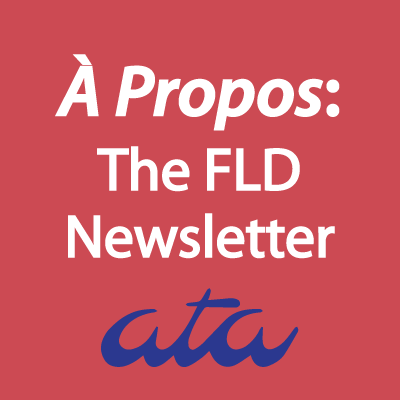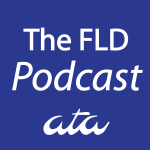[Editor’s note: This article was originally published at Le mot juste en anglais.]
Traducteurs : Quelques réflexions sur la manière dont les glossaires peuvent nous aider à éviter certains écueils avec nos clients, voire même améliorer et renforcer nos relations avec ces derniers.
Avez-vous peur de la critique ? Avez-vous déjà reçu un e-mail de la part d’un client, quelque peu embarrassant, vous expliquant que votre traduction ne s’avérait pas entièrement satisfaisante ? Cela peut nous arriver à tous, traducteurs débutants comme expérimentés. Mais ne soyons pas pessimistes ! Posons-nous plutôt la question suivante : comment pouvons-nous transformer une expérience quelque peu difficile, à savoir la peur de la critique et la critique elle-même, en une expérience positive ? Soyons honnêtes avec nous-mêmes. II est beaucoup plus facile de progresser quand nous parvenons à changer notre perspective. Observer les problématiques rencontrées par nos clients avec curiosité et enthousiasme, au lieu de ressasser nos frustrations, peut en effet nous permettre de nous donner cette impulsion.
Offrir un glossaire à nos clients est une stratégie qui nous permet de mieux gérer la critique. Le glossaire dans un tel cas se transforme en un véritable outil pour développer un style de travail collaboratif avec nos clients, tout en offrant l’opportunité de découvrir des bénéfices supplémentaires et inattendus.
Les glossaires ont leur rôle à jouer, dès lors qu’ils clarifient et matérialisent un accord sur la terminologie à retenir. Ils permettent de faire évoluer une relation stressante vers une relation de travail apaisée et collaborative.
Partager un glossaire à mi-chemin d’un projet peut ainsi créer un système préventif de validation de la terminologie avec vos clients. Par exemple, si vous traduisez un rapport d’entretien annuel d’évaluation pour une société caractérisée par un domaine d’activité très spécialisé et technique, le glossaire pourrait se révéler un précieux allié. Proposer à votre client de revoir votre glossaire une fois arrivé à mi-chemin du projet vous permettra de vous assurer, d’une part, de la pertinence de la terminologie choisie par vos soins, et d’autre part, que cette dernière correspond effectivement aux préférences de votre client pour des raisons, notamment, d’uniformisation.
Vous pouvez également commencer à entrevoir comment cette stratégie peut constituer une excellente manière de développer une nouvelle spécialisation en tant que traducteur. Il faut bien commencer un jour, n’est-ce pas ? C’est en forgeant qu’on devient forgeron. C’est dans cette optique que les glossaires peuvent nous offrir l’expérience tant nécessaire au développement d’une nouvelle spécialisation. Un glossaire envoyé à mi-chemin d’un projet s’inscrit dès lors dans une stratégie gagnant-gagnant, s’il nous permet de réduire notre niveau de stress, de renforcer notre tranquillité d’esprit et de développer avec nos clients des relations basées sur la confiance.
Un glossaire envoyé à la fin de votre projet de traduction peut également offrir à vos clients l’opportunité de réduire le temps passé par ces derniers en interne à effectuer leur contrôle qualité. Si je reprends mon exemple du rapport d’entretien annuel d’évaluation, au lieu de se plonger directement dans votre traduction et de l’examiner à la loupe, votre client (probablement un directeur RH) pourra dans un premier temps consulter votre glossaire et sera immédiatement en mesure de déterminer si certains termes diffèrent de ses préférences ou de la terminologie utilisée au sein de la société. Cette étape pourra ainsi permettre à vos clients de réduire le temps passé à relire votre traduction finale. Vous avez ainsi un argument de taille pour vos clients en faveur des glossaires : réduire le temps passé par ces derniers en interne à effectuer leur contrôle qualité. Et pour vous, quels sont les avantages ? Essentiellement les mêmes que ceux qui peuvent être retirés de l’envoi d’un glossaire à mi-chemin d’un projet : vous développez vos connaissances, vous réduisez votre niveau de stress et vous gagnez en tranquillité d’esprit, tout en renforçant vos relations avec vos clients.
Plusieurs avantages inattendus peuvent également être découverts dans le cadre de ce processus. En plus d’apprendre de votre client et d’être ainsi en mesure de diversifier vos domaines de compétences, partager des glossaires pourrait vous aider à offrir des services hauts de gamme et à vous positionner sur le marché comme un prestataire soucieux d’aider véritablement ses clients. Et par véritablement aider ses clients, je fais référence à quelque chose de tangible et non à de simples promesses. Grâce à vos glossaires, vous avez quelque chose de tangible à proposer à vos clients afin de vraiment les aider.
Cela étant, en procédant de la sorte, il demeure légitime de s’interroger sur le risque qu’un client puisse ensuite recourir à un service de traduction moins cher axé sur le volume et non la qualité. Au bout du compte, la question à se poser est de savoir si nous avons vraiment envie de travailler avec ce type de clients. Si la réponse est non, alors travailler avec des glossaires vous permettra de vous débarrasser des clients avec qui vous ne souhaitez pas travailler. L’utilisation des glossaires peut ainsi être envisagée comme une manière de créer votre propre style où vous pouvez consacrer votre temps et votre énergie au service de clients qui partagent vos valeurs et votre vision : le travail collaboratif, le savoir-faire, la minutie, le développement, etc. Le choix vous appartient. Vous pouvez choisir et définir la façon dont vous voulez travailler.
Et en pratique, comment pouvez-vous « vendre » vos services de glossaires ? La prochaine fois qu’un client retient vos services pour un projet dans lequel vous avez envie d’établir un dialogue, commencez à créer un glossaire, envoyez-le à votre client et n’oubliez pas d’ajouter la mention « glossaire offert à titre gracieux » sur votre facture. Par la suite, vous serez peut-être en mesure d’ajouter les glossaires à vos différents services, tout en défendant leurs multiples avantages.
Est-ce que cette stratégie vous permettra de vous positionner en tant que prestataire de services haut de gamme ? Est-ce que cela vous permettra de définir l’éventail de services que vous souhaitez offrir en tant que traducteur ? Pourquoi ne pas essayer ? Je serais ravie d’échanger avec vous et de recueillir vos observations et commentaires.
Audrey Pouligny is an English-French legal translator. She can be reached at audrey@quidlingua.com and www.quidlingua.com.

